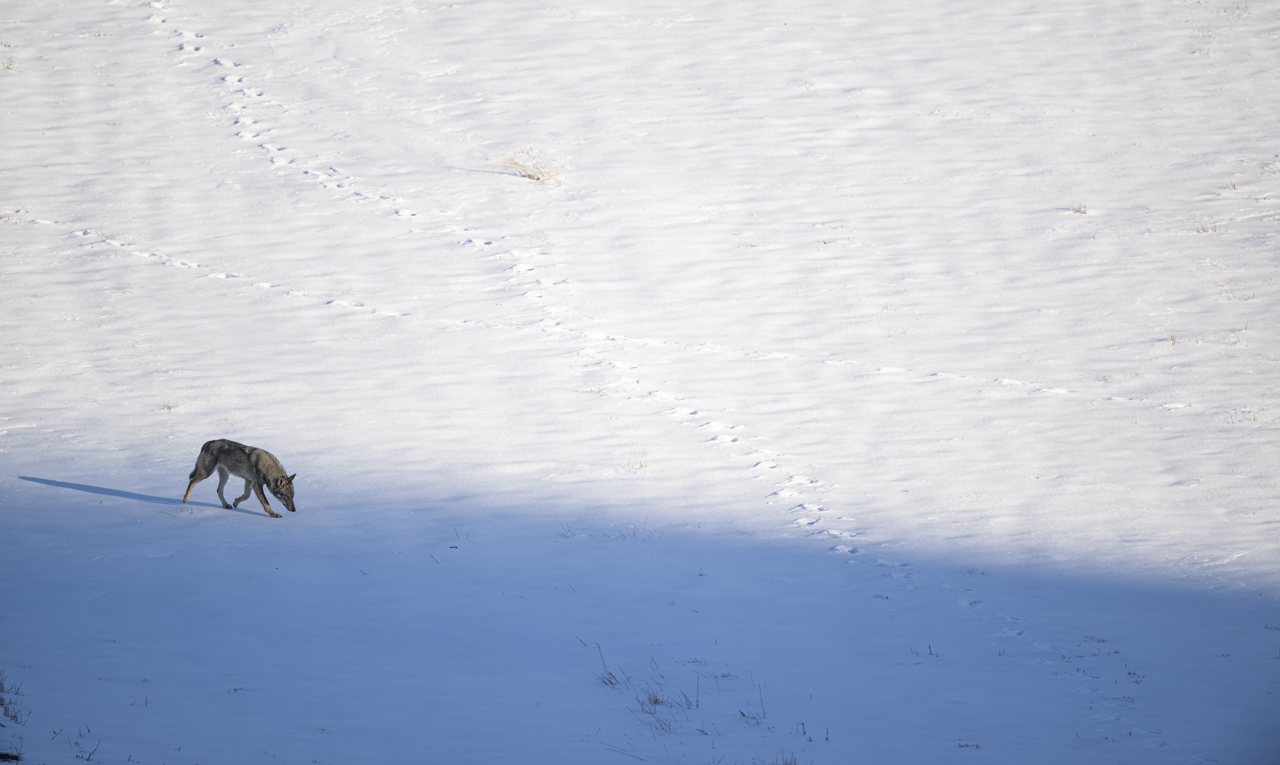I am in Abruzzo, among these now familiar mountains, where I can still find a more peaceful pace of life and a closer contact with wildlife. I reconnect with the origins, with a simpler and more ancient world that follows, now against the tide, the eternal laws and slow times of a nature increasingly retreating and cornered by the unstoppable advance of our so-called civilization.
The starry nights and the cold north winds freeze the air in this March devoid of hints of spring. The snow still covers less exposed slopes and valleys with large white sheets, despite the winter being mild and lacking in rainfall, as is happening more and more often in the last years.
I’m here for the wolves, they are the ones I’m looking for, for them I get up at four in the morning, I get started, I curl up in my camouflage cloth to withstand the freezing temperatures and the wind that makes them even less bearable. And I wait. For hours, in silence, I wait peeking around without making sudden movements, to become part of the environment and hide, as much as possible, from the sight of the predator. And I hope, I hope with all the strength I am capable of that they really arrive and the thought strengthens my desire to resist the cold, the stillness, the boredom of time that passes without anything, or almost anything, happening. I look around and try to interpret the scarce signals that come to me: the barking dogs, the sudden croaking of crows, all signs of the possible approach of the wild animal which, more than others, is able to stimulate the human imagination. Loved or hated, in no uncertain terms.
Hunted and reduced in the past to a handful of individuals relegated to the deepest recesses of the Apennines, forced to eat waste and some stolen sheep – facing serious risks – for lack of its natural prey: deer, roe deer, wild boar, swept away from indiscriminate hunting and the alteration of their habitat.
This symbolic animal has shown unsuspected qualities of intelligence, resistance, adaptability and, when conditions have allowed it – slowly and in total autonomy – it has regained its historical mountain range. He went even further and now wolves in Italy are in good numbers and distributed not only in the mountains, but also on the coasts and in the plains, in an environmental context that has always belonged to him, but which today is particularly man-made and modified.
This is the flow of thoughts that emerge as time passes but, all of a sudden, yet another glimpse into the distance shows that something is moving in my direction. Incredible, but it’s him, really him: a lone wolf who, nose to the ground, follows a scented trail that seems to lead him towards me. It is certainly not my first meeting, but every time the reaction is the same: the heart jumps in the throat, the adrenaline flows freely, the long-awaited moment has come again. Now all my concentration is on him, I frame and follow his movements slowly, in trepidation. I shoot, I wait and I shoot again, trying not to miss the best moment.
Crossing his gaze means encountering the unfathomable and profound Mystery. Following his solitary figure or those of the pack moving far away in the meanders of the Apennine landscape means witnessing the miracle of a young world, which is still vital and wants to resist, despite everything.
In the meantime, I continue to observe him as he safely moves on the snow hardened by the night frost, on the border between the receding shadow of the night and the advancing first light of the day and I envy his innate ability to live in the present, a gift denied us, humans, oppressed by the past and worried about the future.

